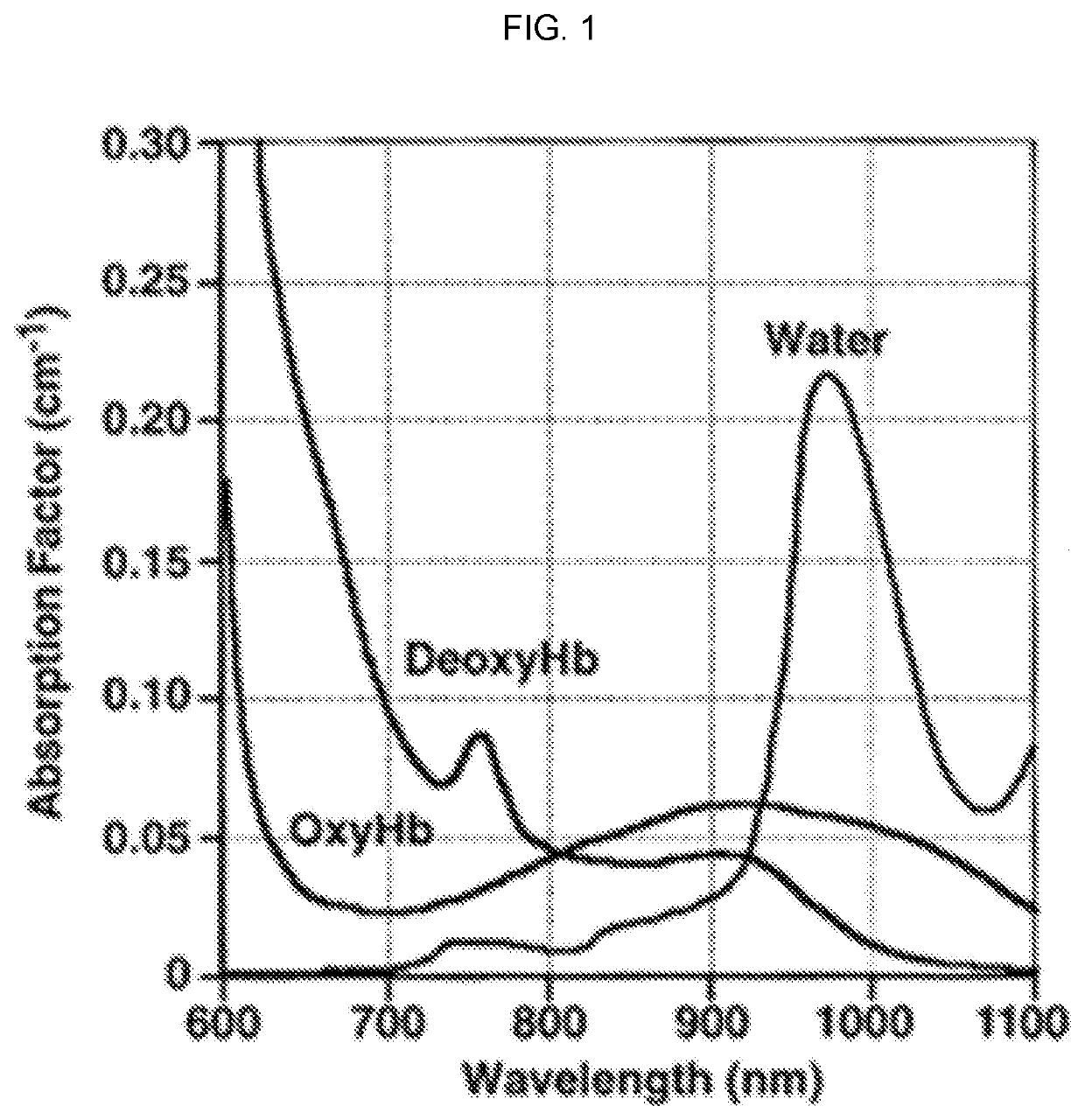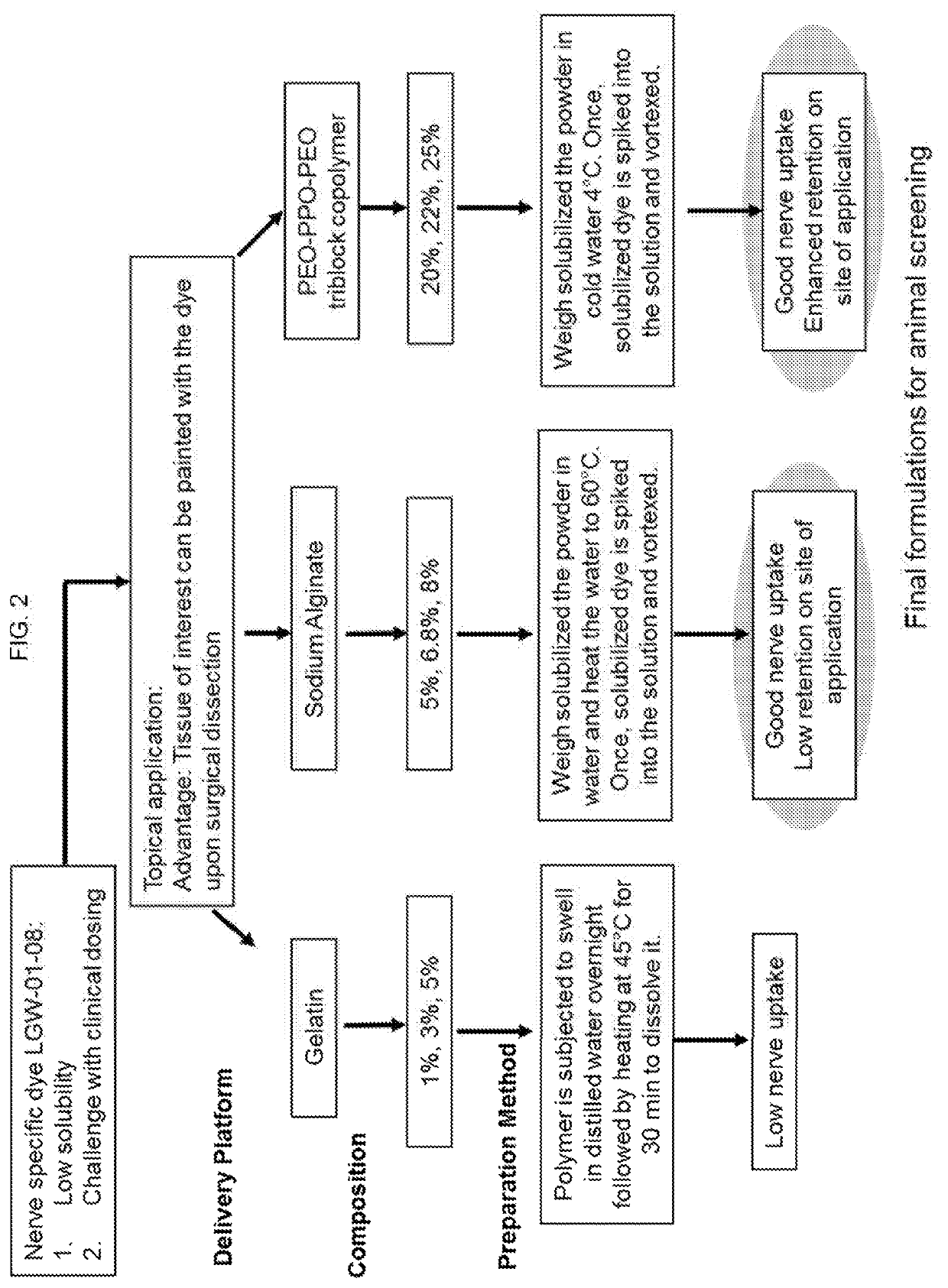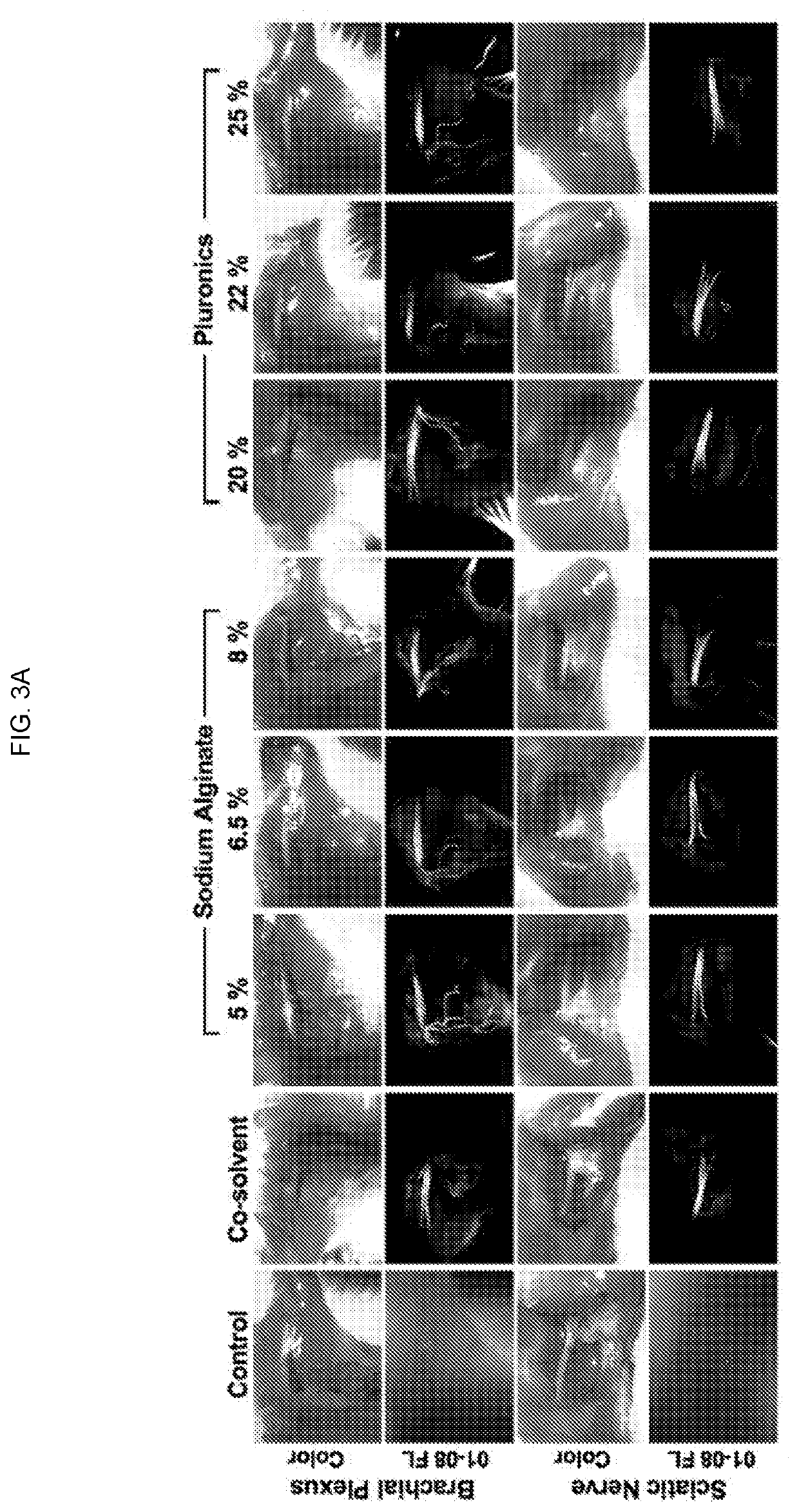Nerve-specific fluorophore formulations for direct and systemic administration
a fluorophore and formulation technology, applied in the field of nerve-specific fluorophore formulations, can solve the problems of nerve identification and sparing, lack of specificity, wide-field imaging functionality, and difficulty in identifying vital structures for preservation (e.g., nerves) during surgical procedures, so as to reduce background staining, reduce the spread of applied fluorophore, and facilitate the effect of improving the signal to background ratio
- Summary
- Abstract
- Description
- Claims
- Application Information
AI Technical Summary
Benefits of technology
Problems solved by technology
Method used
Image
Examples
embodiment 1
2. The gel-based formulation of embodiment 1 wherein the fluorophore is an oxazine derivative.
embodiment 2
3. The gel-based formulation of embodiment 2 wherein the oxazine derivative is LGW1-08.
4. The gel-based formulation of any one of embodiments 1-3 including 50 μg / mL fluorophore.
5. The gel-based formulation of any one of embodiments 1-3 including 200 μg / mL fluorophore.
6. The gel-based formulation of any one of embodiments 1-5 wherein the alginate salt is sodium alginate.
embodiment 6
7. The gel-based formulation of embodiment 6 including 5-9% sodium alginate.
8. The gel-based formulation of embodiment 6 or 7 including 5-8% sodium alginate.
9. The gel-based formulation of any one of embodiments 6-8 including 6-8% sodium alginate.
10. The gel-based formulation of any one of embodiments 6-9 including 6-7% sodium alginate.
11. The gel-based formulation of any one of embodiments 6-10 including 6.5% sodium alginate.
12. The gel-based formulation of any one of embodiments 1-11 including 19-25% PEO-PPO-PEO triblock copolymer.
13. The gel-based formulation of any one of embodiments 1-12 including 20-24% PEO-PPO-PEO triblock copolymer.
14. The gel-based formulation of any one of embodiments 1-13 including 21-23% PEO-PPO-PEO triblock copolymer.
15. The gel-based formulation of any one of embodiments 1-14 including 22% PEO-PPO-PEO triblock copolymer.
16. The gel-based formulation of any one of embodiments 6-13 including 5-8% sodium alginate and / or 20-24% PEO-PPO-PEO block copolymer....
PUM
| Property | Measurement | Unit |
|---|---|---|
| concentration | aaaaa | aaaaa |
| concentration | aaaaa | aaaaa |
| wavelengths | aaaaa | aaaaa |
Abstract
Description
Claims
Application Information
 Login to View More
Login to View More - R&D
- Intellectual Property
- Life Sciences
- Materials
- Tech Scout
- Unparalleled Data Quality
- Higher Quality Content
- 60% Fewer Hallucinations
Browse by: Latest US Patents, China's latest patents, Technical Efficacy Thesaurus, Application Domain, Technology Topic, Popular Technical Reports.
© 2025 PatSnap. All rights reserved.Legal|Privacy policy|Modern Slavery Act Transparency Statement|Sitemap|About US| Contact US: help@patsnap.com



